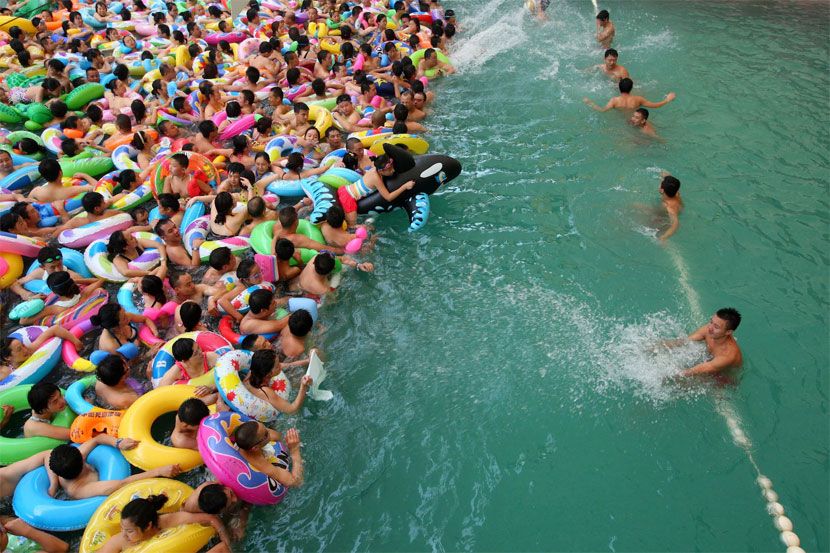Monday, July 18, 2022

The heatwave sweeping across China is pushing tourists to seek out cooler destinations this summer following the easing of restrictions on domestic travel.
According to the National Climate Centre , the current heatwave is centred on the vast Yangtze River basin, stretching from Chengdu in Sichuan to coastal Shanghai and has affected more than 900 million of China’s 1.4 billion people.
The heatwave has triggered temperature rise to about 40 degrees Celsius (104 Fahrenheit) across large parts of the country, with many cases of heatstroke and unforeseen highs recorded in some of the country’s most populous cities such as Chongqing and Shanghai.
According to a report, as of Friday, online search traffic for the keyword “heat escape” increased by 127 per cent week-on-week. The popularity of relevant keywords such as “water world”, “rafting” and “forest” has also risen significantly.
These searches were most common in the cities and provinces along the Yangtze River Basin.
Although daytime temperatures there are still around 30 degree Celsius, they are around five degrees lower than in Guangzhou and at night drop to a more tolerable 23 degrees.
Fiona Jia, a Beijing-based journalist, chose to seek out even higher ground: travelling to the Xiata National Park in northern Xinjiang, where the altitude is over 3,000 metres (9,800ft)
Usually after the sunsets, Xinjiang’s evening and night are quite cool. And in the mountains it would be much cooler, sometimes you even feel cold.
While the country’s strict quarantine rules for returning travellers make foreign holidays almost impossible, travellers looking to beat the heat have been helped by a recent easing of COVID-19 controls.
Yang Fuquan, a researcher with the Yunnan Academy of Social Sciences, said he had seen the biggest rebound in tourist numbers in the area around Lijiang city – an area known for its historical architecture and mountainous scenery – this month.
It is the third year of the pandemic, many people want to go out to travel, and the demand from students is high during the summer holiday.
The tourism industry in Lijiang is recovering, and people here are very happy, but it’s still far from the pre-pandemic level, more time is needed for a full recovery.
He said the easing of travel curbs, particularly a change to the Big Data Itinerary Card – a national digital pass – so that it no longer shows travellers have recently been to cities with COVID-19 cases, had made interprovincial travel much easier.
However, there are still barriers to long-distance travel, especially for places with local COVID-19 infections. On Sunday, China confirmed 580 cases across 16 provinces.
Some travellers have also reported problems with their health codes, a system based on the traffic light principle which requires a green code to use public transport or visit a range of venues.
Mina Wang, who lives in Shanghai, arrived at the Zhangjiajie National Park in Hunan province with her friends on Friday, but they found the health code of some people in the group turned yellow on Sunday, because the local health code system does not acknowledge PCR test results from Shanghai.
Wang also said that if someone’s health code turns yellow, it is an indication pf too many restrictions. They cannot go to regular testing facilities but only to specific hospitals dedicated for “yellow code” patients.
In this case, even if one escapes the heat in Shanghai by travelling, it is not worth it, because they may encounter various health code problems on the road.
Friday, April 26, 2024
Friday, April 26, 2024
Friday, April 26, 2024